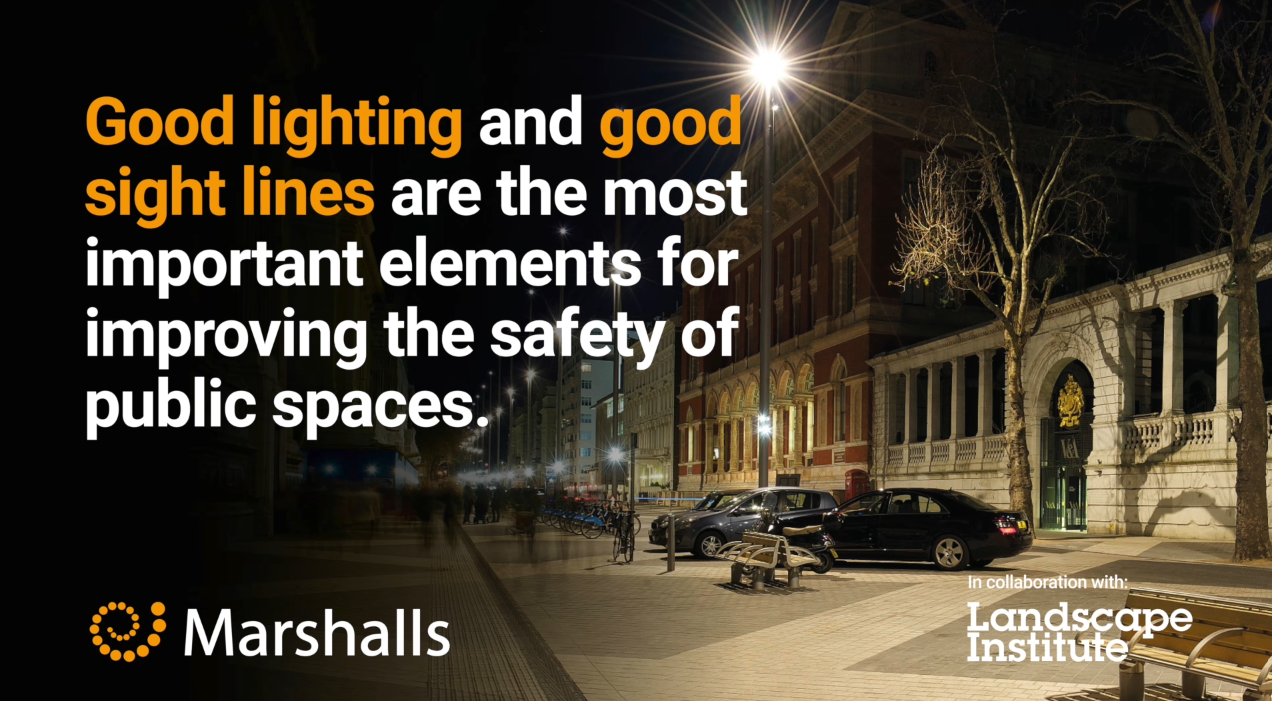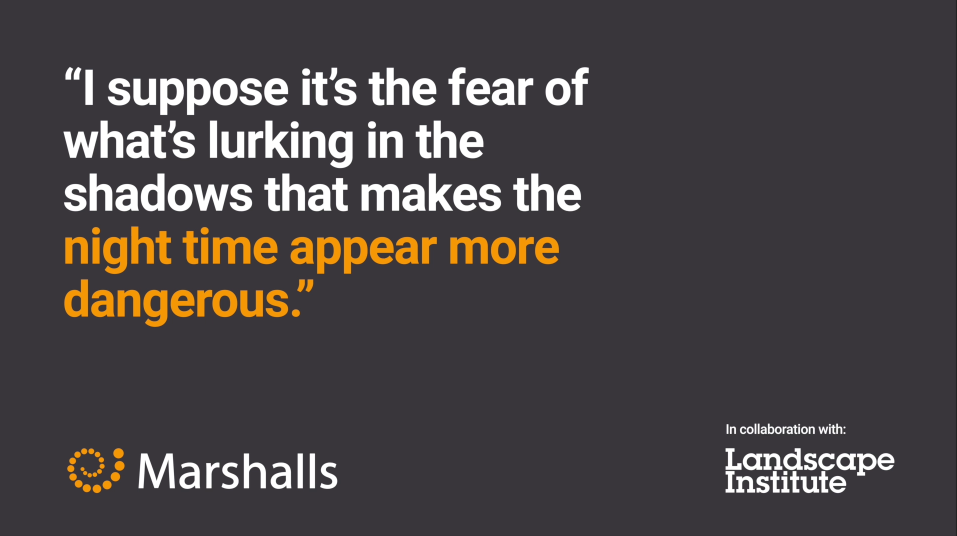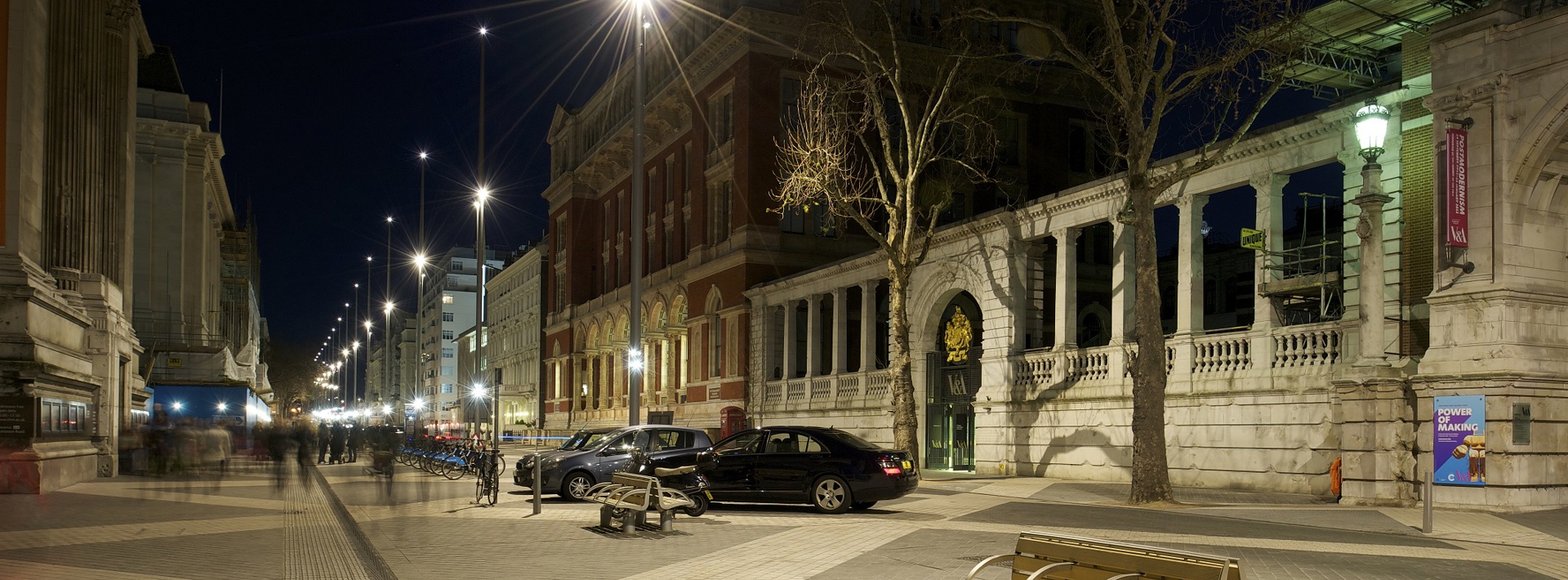Blog
Launched in 2022, Creating Safer Spaces looks at how people feel when using public spaces and recommends several key design pillars for future designs. In this article, I'll explore what we discovered about the importance of wayfinding and visibility when it comes to perceptions of safety, including details of the design principles we'd recommend.

What do people say about the impact of visibility and wayfinding on how safe they feel in public?
The Safer Spaces survey revealed that 77% of people think about their safety when out and about in public, at least some of the time. And at night, they are nearly four times more likely to be concerned about their safety and well-being in some locations. Seeing potential dangers and hazards was something that nearly everyone was concerned about, and it's one of the main reasons people feel more vulnerable after dusk and why we propose the notion of 'designing for the dark'.
It's no surprise that people feel safer when visibility is good. Identifying shapes and understanding what they are as early as possible creates a greater feeling of safety; seeing what lies ahead is vitally important, particularly where there is a lack of familiarity to rely upon. Our research confirmed this by identifying that good lighting and sightlines are the most critical elements for improving the safety of public spaces; 95% and 90% of people identified these as essential features to help them feel safer.
Designing spaces with good visibility makes it harder for people to hide or behave antisocially, which increases feelings of safety. For a more enclosed space, seeing a specific route through and out also helps. And while sightlines are crucial in breadth and depth, they are commonly restricted in more exciting spaces such as parks. Corners, winding paths, high walls and large or overgrown greenery all help create attractive public spaces. Still, it's essential to consider how these design features could negatively affect the visibility of main routes.
Finally, wayfinding has its place in improving feelings of safety and confidence in a space. Not only is it critical when space is unfamiliar, but it also helps to reduce worries about getting lost or led into a less safe area. Waymarking ensures people can confidently follow an intended route while providing an element of control to the flow of pedestrians, directing them away from hazardous and isolated, run-down areas.

Designing safer spaces – our recommendations for visibility and wayfinding
So when it comes to designing future spaces, what can we do to improve visibility and wayfinding to ensure people feel, and are, safer? The following design considerations are within the Creating Safer Spaces whitepaper, available to download now.
Lighting
While there is conflicting evidence about whether lighting reduces actual crime levels, it's clear that it can significantly alleviate the fear of crime. People often decide whether or not to use a space depending on its lighting levels after dusk.
Lighting that has been strategically designed for the space increases visibility and gives a general impression that an area is well looked after and possibly monitored, once again highlighting the importance of designing for the dark.
The placement of lighting is a balancing act, combining the need for security with the privacy of nearby residents whilst also creating ambience. In areas of high crime, designers should consider the different types of lighting used to deter vandalism or destruction of the lights themselves. Tall, traditional street lights are often not the best solution to meet public realm requirements as they can create islands of light in a pool of darkness – this can increase anxiety when moving through the darker areas. In most cases, it's better to have consistent lighting levels throughout spaces.
Using lights to guide pedestrians on a route is beneficial while illuminating entrances, exits and signage in spaces such as parks. Lighting can help reassure pedestrians that they are heading in the right direction, and different levels can help to signpost people along the safest route with several options subtly. Lighting the perimeter edge of a park or square can help users with spatial awareness and enhance their feelings of security.
The lighting units' style can create a 'sense of place', increasing an area's familiarity, legibility and coherence. Rachel Kaplan et al. in their book 'With People in Mind' , state that "people can readily discern the presence of a few distinct regions or areas, and those make it easier to make sense of, or understand, a place." Wayfinding is directly linked to lighting for apparent reasons. Repetition of a specific type of lighting, whether in shape or colouring, creates memorable components, which is critical to legibility. To quote Kaplan et al., "in a legible place, one can imagine finding one's way, not only to a destination, but back again as well. A single landmark or an area that is distinctive makes wayfinding much more straightforward.
Biodiversity
In a field experiment by Evensen et al, the impact of green space and vegetation on perceived safety was tested using the height of a hedge along a park pathway. The study showed that cutting down the hedge improved the prospect of the immediate surrounding area for female visitors, making them feel safer in the park.
To support biodiversity without compromising safety, using lower-level hedges along pathways and shrubbery instead of long grasses, planters, and large nectar-rich flower beds are all excellent solutions. Selected shrubs such as Cotoneaster give the added benefit of absorbing significantly more air pollutants than many other shrubs whilst also providing berries loved by birds.
Placement is also vital. There is a difference between planting a hedge to promote biodiversity and perceived safety. Birds prefer not to use greenery for nesting or roosting if it is much below two metres in height.
More prominent elements, such as taller shrubs and trees, should still feature in landscape design but place further away from more highly trafficked sections of the public realm. As well as removing potential places of concealment for would-be attackers close to main thoroughfares, this has the added benefit of keeping birds away from the places most likely to be disturbed by humans.
Wayfinding
Effective wayfinding includes signs, maps and other visual cues to help orient and guide people through space and their destination. The best wayfinding systems are those developed uniquely to the topography and orientation of a specific public place, its infrastructure, and surrounding amenities. There is no one size fits all approach.
Best practice spacial planning considerations include the use of signage through to demarcation, pattern breaks, and colour contrasts in paving, combined with the use of planting and greenery, which all contribute to communicating the structure and flow of a space.
Safety is enhanced by supporting people's free and easy movement, particularly at night, when they might feel most vulnerable.
Ensuring that routes through an area have a clear hierarchy can help manage user expectations, allowing the landscape to communicate purpose to its audience. Primary routes should be broader, ideally two metres and well-lit, and narrower pathways for detours and secondary destinations.
It's important to lay primary travel routes, such as arterial pathways, along users' 'desire lines'. This can be determined during the design phase by pedestrian flow modelling.
Further learning about creating safer spaces
As well as the whitepaper, you can now book our Creating Safer Spaces CPD, allowing you to use the insight and pillars for future space design. The session lasts an hour and can be delivered online or in person.










